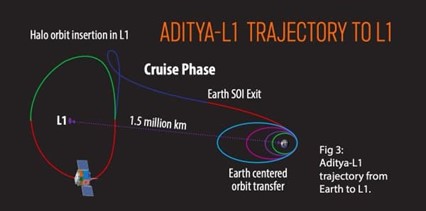PREVIOUS
Aditya L1 Mission
September 3 , 2023
774 days
2521
0
- The Indian Space Research Organisation (ISRO) has launched Aditya L-1, its first space-based mission to study the Sun.
- The solar probe was carried into space by the Polar Satellite Launch Vehicle (PSLV) in ‘XL’ configuration.
- The rocket is most powerful in the ‘XL’ configuration as it is equipped with six extended strap-on boosters.
- PSLV-XL can lift 1,750 kg of payloads to the sun-synchronous polar orbit.
- The spacecraft will finally be stationed in a halo orbit around the Lagrange point 1 (L1) of the Sun-Earth system.
- It is about 1.5 million km from the Earth.
- The Aditya L-1 will cover its journey to the L1 point in about four months.
- There are essentially seven payloads on the Aditya L-1.
- The mission’s main objective is to expand our knowledge of the Sun, and how its radiation, heat, flow of particles, and magnetic fields affect us.
- Lagrange points are the points where gravitational pull of the celestial bodies equals the centripetal force required to keep a smaller third body in orbit.

Leave a Reply
Your Comment is awaiting moderation.


